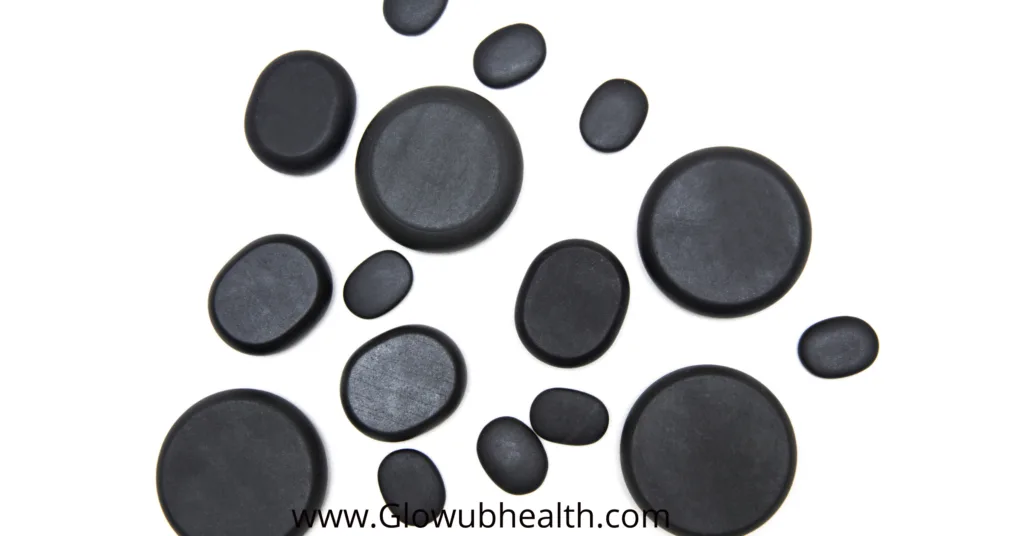Hot Stone Massage Techniques for Targeting Tension and Pain Relief
In today’s fast-paced world, many of us suffer from chronic tension and pain in specific areas like the back, shoulders, and neck. Hot stone massage techniques offer an effective, natural approach to relieving muscle stiffness, reducing pain, and promoting overall relaxation.
With origins in ancient cultures, hot stone massage combines the soothing warmth of stones with targeted massage techniques to provide deep relief.
In this article, we’ll explore the best hot stone massage techniques specifically designed to target tension and pain, why they’re effective, and how to use them safely.
Whether you’re a professional therapist or someone interested in learning for personal wellness, this guide will provide you with valuable insights.
This article is for informational purposes only and does not constitute medical or therapeutic advice. Always consult with a licensed healthcare provider or massage therapist before undergoing hot stone massage, especially if you have underlying health conditions or are pregnant.
What is Hot Stone Massage?

Origins and Evolution
Hot stone massage is a technique that has evolved over centuries, blending ancient healing practices with modern therapeutic massage. Originally used in traditional medicine around the world, including by ancient Chinese and indigenous American cultures, heated stones were believed to release tension and promote well-being.
Over time, contemporary massage therapists have refined these practices, integrating heated stones into structured massage routines to enhance muscle relaxation and pain relief.
Today’s hot stone massage is an artful combination of warmth and targeted techniques designed to alleviate tension in a deeply soothing way.
Benefits of Hot Stone Massage for Pain Relief
Hot stones deliver heat deep into the muscles, promoting circulation, reducing muscle tension, and easing the nervous system’s response to pain.
This technique is especially effective for people with chronic muscle stiffness, fibromyalgia, or anxiety-related tension.
Read More: Benefits of Hot Stone Massage: Top 10 Transformative Effects
How Does Hot Stone Massage Target Tension and Pain?

The Science Behind Heat and Pain Relief
Heat has long been used in pain relief because it dilates blood vessels, increasing blood flow to the affected areas. Increased circulation helps reduce the buildup of lactic acid in muscles, relieving stiffness and soreness.
Role of Heat in Muscle Relaxation
Heated stones reach deep into the muscle layers, helping to relax them and make massage techniques more effective. Stones also provide sustained heat that continues to relax muscles during and after the session, creating longer-lasting relief.
Testimonial:
As someone who works long hours at a desk, I often struggle with tightness and soreness in my neck and back. I decided to try heat therapy after hearing about its benefits, and the results have been incredible.
Using a heating pad for just 20 minutes a day has made a noticeable difference. The warmth penetrates deep into the muscles, easing tension and promoting relaxation. After a few sessions, I felt a significant reduction in stiffness and pain.
It also improved my mobility and allowed me to stretch more effectively. I highly recommend heat therapy to anyone dealing with muscle tightness or chronic pain. It’s a simple, yet powerful way to relieve discomfort and enhance overall well-being.
— John M., Office Worker, Age 45
Essential Tools and Setup for Hot Stone Massage Techniques
Selecting the Right Stones
- Basalt Stones: These stones are volcanic in origin and are ideal for hot stone massage because they retain heat longer and have a smooth surface.
- Stone Sizes and Placement: Large stones are better for the back and thighs, while smaller stones are ideal for the face, hands, and delicate areas.
Preparing the Stones and Workspace
- Heating Stones Safely: Use a professional stone heater, avoiding boiling water which can overheat stones and cause burns.
- Workspace Comfort: Set up a quiet, warm environment with soothing music or aromatherapy to enhance relaxation.
Step-by-Step Guide: Hot Stone Massage Techniques for Targeting Pain and Tension

1) Warming Up the Muscles
- Begin with traditional Swedish or light massage strokes to relax the client and prepare the muscles for deeper work.
- Use long, gliding strokes along the back, shoulders, and neck to release superficial tension.
2) Applying Hot Stones to Key Tension Areas
Upper Back and Shoulders
- Place medium-sized heated stones along the shoulders and upper back.
- Leave the stones for 2-3 minutes, allowing the heat to penetrate deep muscle layers.
- Use firm, circular pressure with the stones to break up knots and release tightness in the trapezius and shoulder blade areas.
Lower Back
- Position larger stones along the lower back, focusing on either side of the spine.
- Slowly move the stones in circular motions along the lumbar area to target any stiffness or tension, as this region often holds stress.
Neck and Base of Skull
- Use smaller stones along the base of the skull to relieve headaches and tension in the neck.
- Avoid prolonged pressure here; instead, apply gentle rolling motions with warm stones for 1-2 minutes per side.
3) Techniques for Deep Tension Release
Trigger Point Relief
- Identify trigger points (specific areas of muscle tightness) and apply firm pressure with a small, heated stone.
- Hold for 30-45 seconds, gradually easing off as the muscle tension releases.
Myofascial Release
- This technique uses heated stones with slow, sustained pressure to stretch and relax the fascia (connective tissue surrounding muscles).
- Focus on areas with chronic stiffness, like the lower back and shoulders, to reduce long-term tension.

4. Finishing Techniques and Cooling Down
- Finish with cool stones on the face or temples to balance the effects of heat and promote overall relaxation.
- Use smooth, sweeping motions along the entire back to calm the nervous system.
Precautions and Safety Tips

Avoiding Burns and Overheating
Hot stone massages should always prioritize safety. Ensure that stones are not too hot and test them on your own skin before applying to sensitive areas.
Maintaining a steady temperature is essential, as excessively hot stones can cause burns or discomfort.
When to Avoid Hot Stone Massage
Hot stone massage is not suitable for individuals with open wounds, high blood pressure, diabetes, or certain heart conditions.
Pregnant women should also consult a healthcare provider before considering hot stone therapy.
Case Study: Real-Life Benefits of Hot Stone Massage for Chronic Back Pain
In a study published in The Journal of Alternative and Complementary Medicine, a group of participants with chronic lower back pain underwent hot stone massage therapy over four weeks. Results showed a 60% reduction in reported pain levels and improved range of motion.
This study reinforces the benefits of hot stone massage for managing pain, especially when combined with conventional massage techniques.
Practical Tips for Using Hot Stone Massage Techniques at Home
- Start Small: Begin with smaller stones on easily accessible areas like the arms and legs.
- Monitor Stone Temperature: Use a temperature gauge or touch test to ensure stones are comfortably warm, not hot.
- Consistency is Key: Regular sessions can enhance pain relief and improve overall muscle flexibility over time.

Personal Insights and Experiences
As a wellness enthusiast, I’ve found hot stone massage to be especially effective for relieving shoulder tension and reducing headaches.
Incorporating these techniques into my own routine has not only helped me manage physical tension but has also become a mindful practice that calms both body and mind.
Conclusion
Hot stone massage techniques offer a powerful, natural solution for targeting tension and pain relief. By harnessing the heat-retaining properties of stones, these techniques deliver lasting muscle relaxation, improve circulation, and alleviate pain.
Whether practiced professionally or at home, hot stone massage can be a valuable part of a holistic wellness routine.
By following the steps and tips outlined in this guide, readers can enjoy the deep, therapeutic benefits of hot stone massage techniques, achieving a new level of relaxation and pain relief.
For those looking to learn more, consider reaching out to a certified massage therapist or exploring additional resources to ensure safe practices.
FAQ
1. What is hot stone massage, and how does it work?
Hot stone massage is a therapeutic technique where heated stones are placed on the body and used to massage tense areas. The warmth from the stones penetrates deeply into the muscles, helping to relieve stiffness, increase circulation, and reduce pain.
2. What types of stones are used in hot stone massage?
The most commonly used stones are basalt stones, which are volcanic in origin. These stones are chosen because they retain heat well and have a smooth surface, making them comfortable and effective for massage.
3. How hot are the stones in a hot stone massage?
The stones are typically heated to around 120-130°F (49-54°C), which is warm enough to be therapeutic but not so hot as to cause burns or discomfort. Massage therapists always test the stones before application to ensure a safe and comfortable temperature.
4. Is hot stone massage safe for everyone?
While hot stone massage is generally safe, certain individuals should avoid it, including those with heart disease, high blood pressure, diabetes, or skin conditions. Pregnant women and people with blood clotting disorders should consult a healthcare provider before receiving this type of massage.
5. Can I perform hot stone massage at home?
Yes, hot stone massage can be done at home, but it’s important to follow safety guidelines. Use a professional stone heater, check the temperature carefully, and avoid placing stones directly on bare skin if you’re unsure. Consulting a guide or receiving instruction can be beneficial for beginners.
6. How does hot stone massage help with tension and pain relief?
The heat from the stones helps to relax tense muscles, making it easier to work on deep-seated muscle stiffness. Increased blood flow and warmth help soothe pain and reduce tension in problem areas like the neck, shoulders, and lower back.
7. How often should I get a hot stone massage?
The frequency depends on individual needs and preferences, but many people find that one session every 2-4 weeks is beneficial for maintaining relaxation and tension relief. For chronic pain, more frequent sessions may be recommended by a therapist.
8. How long does a hot stone massage session last?
A typical hot stone massage session lasts between 60 and 90 minutes. This allows enough time to warm up the muscles, apply techniques effectively, and achieve a lasting sense of relaxation.
9. What should I expect after a hot stone massage?
After a hot stone massage, it’s normal to feel relaxed and rejuvenated. Some people may experience slight muscle soreness, similar to the feeling after a workout, but this usually fades quickly. Staying hydrated after the massage can also help flush out any toxins released during the session.






